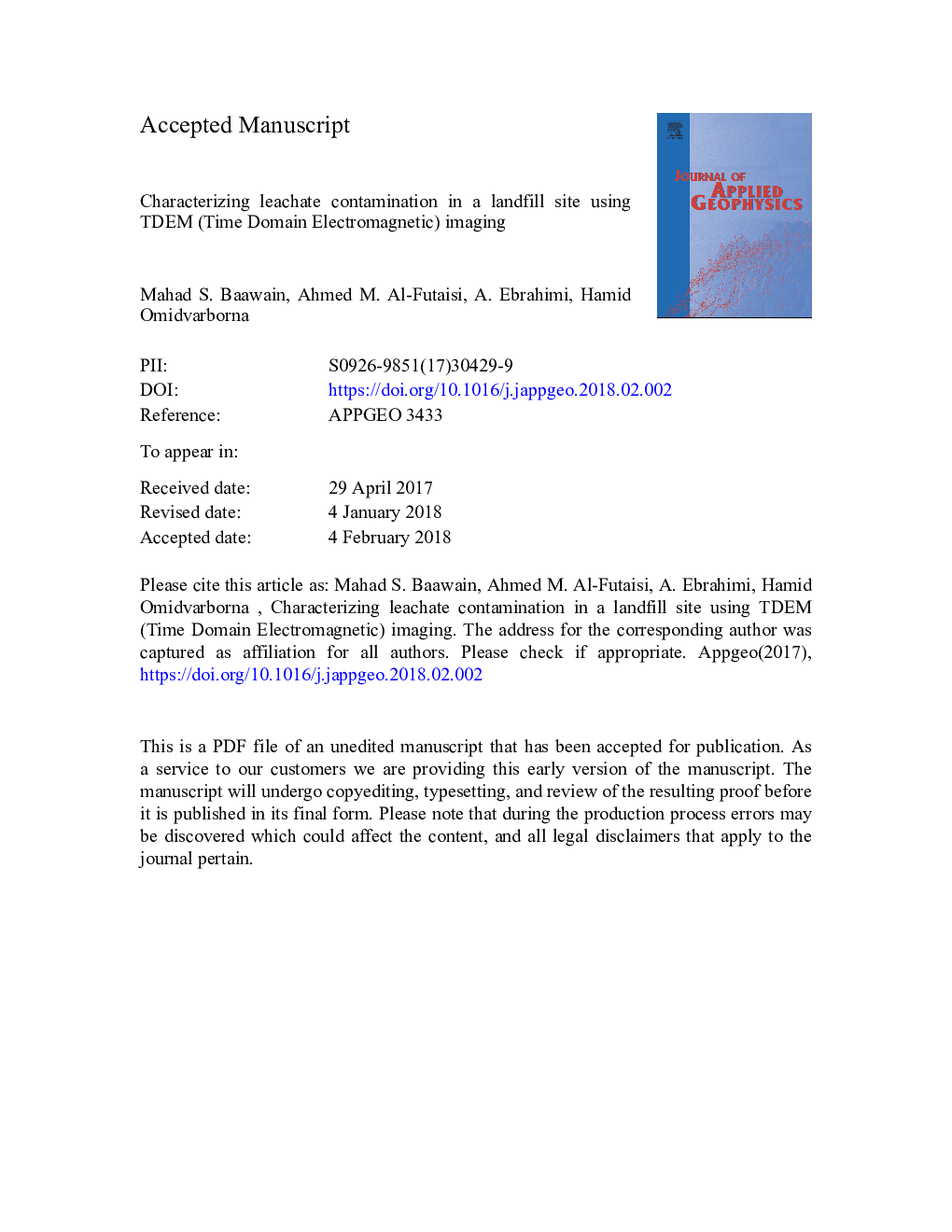| Article ID | Journal | Published Year | Pages | File Type |
|---|---|---|---|---|
| 8915436 | Journal of Applied Geophysics | 2018 | 28 Pages |
Abstract
Time Domain Electromagnetic (TDEM) survey as well as drilling investigations were conducted to identify possible contamination of a dumping site in an unsaturated zone located in Barka, Oman. The method was applied to evaluate conductivity of the contaminated plumes in hot and arid/semiarid region, where high temperatures commonly ranged between 35 and 50â¯Â°C. The drilling investigation was carried out over the survey area to verify the geophysical results. The low-resistivity zone (<80â¯Î©m), encountered near the subsurface, indicated plume migration caused by liquid waste disposal activities. The combination of TDEM survey results with the lithology of piezometers showed that higher resistivity (>90â¯Î©m) was correlated with compacted or cemented gravels and cobbles, particularly that of medium dense to very dense gravels and cobbles. Additionally, the TDEM profiles suggested that the plume migration followed a preferential flow path. The resistivity range 40-80â¯Î©m considered as contaminated areas; however, the drilling results showed the close resistivity domain in the depth >70â¯m below water table for some profiles (BL1, BL2, BL3, BL4 and BL5). The combined results of drilling wells, piezometers, and TDEM apparent resistivity maps showed a coincidence of the migrated leachate plume and water table. Predicted zone of the probable contamination was located at the depth of around 65â¯m and horizontal offset ranges 0-280â¯m, 80-240â¯m, and 40-85â¯m in the sounding traverses of BL4, BL6 and BL7, respectively.
Related Topics
Physical Sciences and Engineering
Earth and Planetary Sciences
Geophysics
Authors
Mahad S. Baawain, Ahmed M. Al-Futaisi, A. Ebrahimi, Hamid Omidvarborna,
